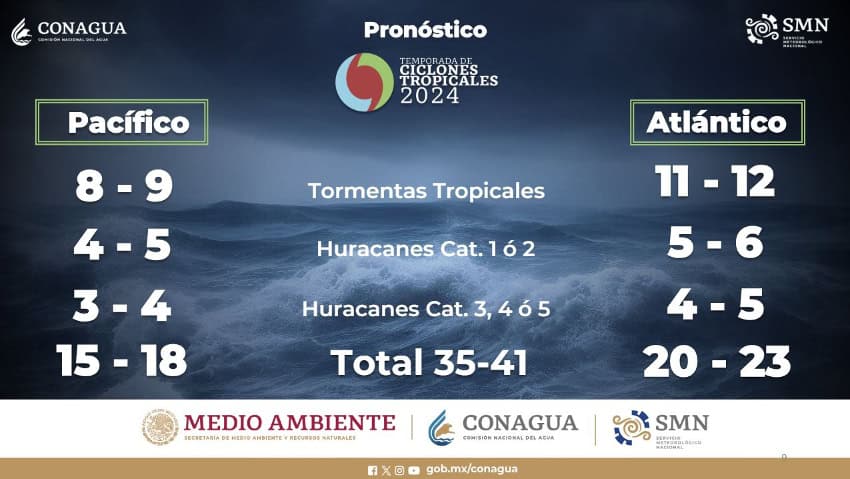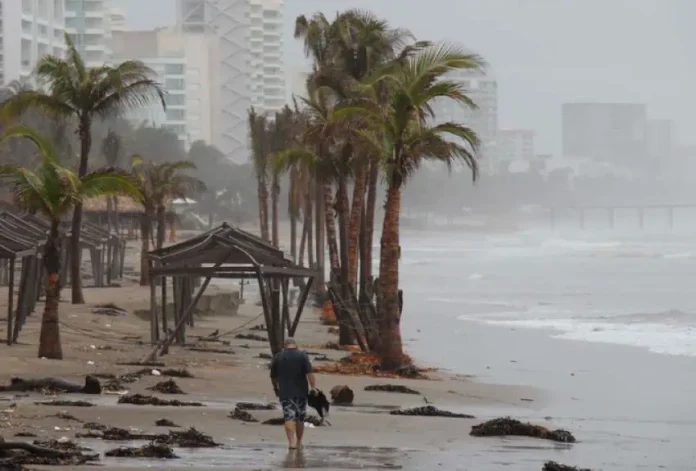Mexico’s National Meteorological Service (SMN) announced the hurricane forecast for 2024 on Saturday. The tropical cyclone season will begin on May 15 in the Northeast Pacific Ocean and June 1 in the Atlantic Ocean (includes the Caribbean and Gulf of Mexico).
The weather agency predicts a more intense hurricane season in 2024 in the Atlantic Ocean, where hurricane activity is expected to increase by up to 50%, with 14 potential storm systems. Meanwhile, the Pacific Ocean will see around 10% more systems than average.

The meteorologists predict 15 to 18 storm systems in the Pacific Ocean — of these, four to five could be Category 1 or 2 hurricanes, and three to four could be Category 3 to 5 hurricanes.
Meanwhile, the Atlantic Ocean is expected to see 20 to 23 total systems, with five to six Category 1 or 2 hurricanes, and four to five Category 3 to 5 hurricanes.
However, not all of these hurricanes and storms are expected to make landfall on the Mexican mainland. Alejandra Méndez Girón, general coordinator of the National Meteorological Service (SMN), predicts that at least five hurricanes will make landfall during the season.
According to the national weather agency, the 2023 hurricane season was one of Mexico’s most active in the last 50 years, with 37 systems. Eight of these made landfall on national territory — 48% more than the average recorded over 50 years (5.4 cyclones per year).

Hurricane Otis, a Category 5 storm that hit the city of Acapulco and surrounding areas on Oct. 25 last year, was the strongest hurricane ever recorded on Mexico’s Pacific coast.
How does the El Niño/La Niña system affect hurricane season?
The El Niño cyclical weather phenomenon, which started in June 2023, has been associated with widespread drought in Mexico, as well as a particularly intense Pacific hurricane season.
However, El Niño is weakening and predicted by the NOAA to end between April and June, with a 60% chance of being followed by La Niña, beginning between June and August.
With La Niña, the tropical cyclone season in the Atlantic is expected to intensify. This is particularly true for this year, as the ocean’s surface temperature is expected to be warmer than usual.
Most regions in Mexico are predicted to receive more rain this year if La Niña develops, which would bring welcome relief — nearly 70% of national territory is experiencing some degree of drought as of April 30, according to the national drought monitor.
